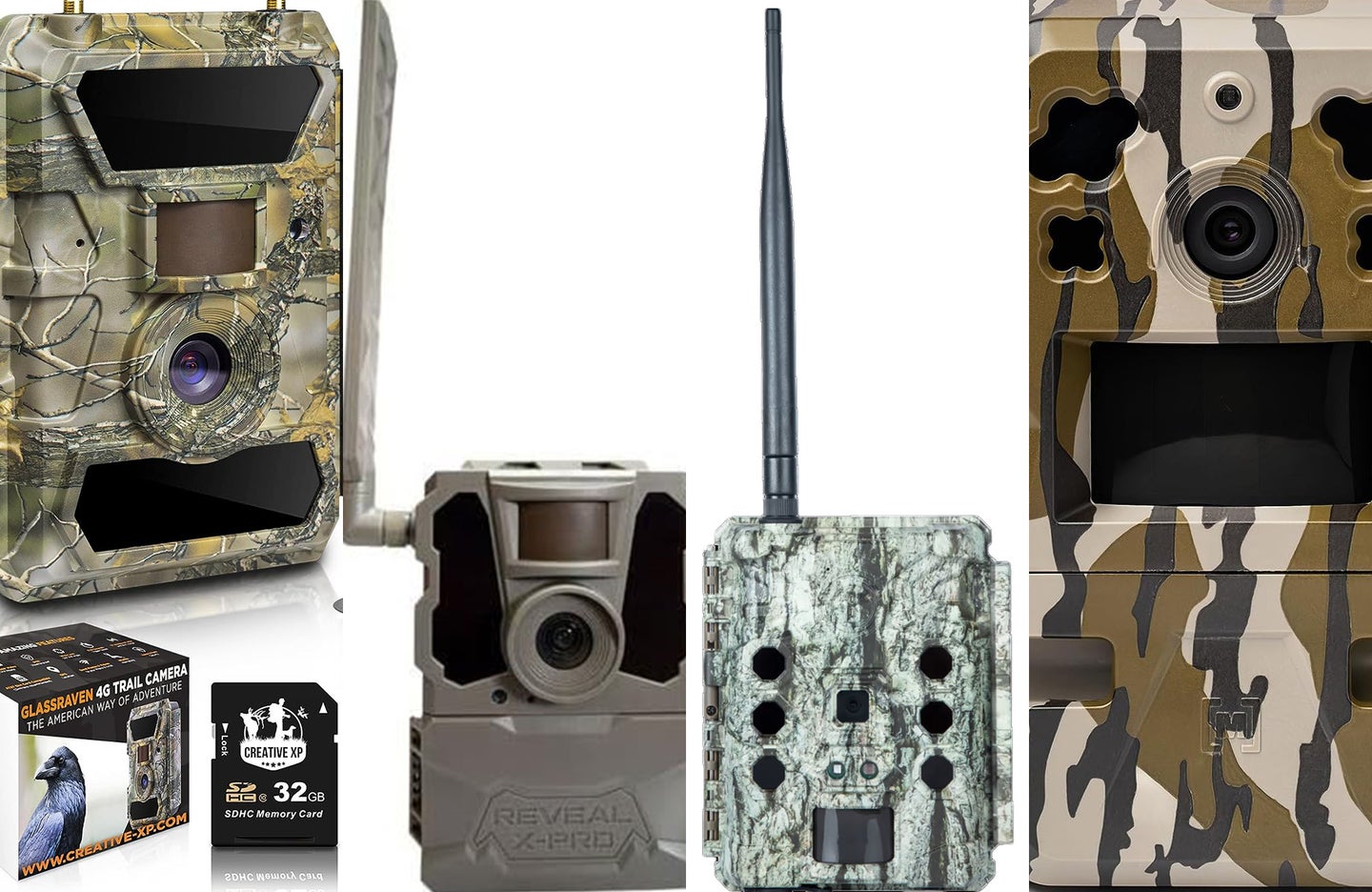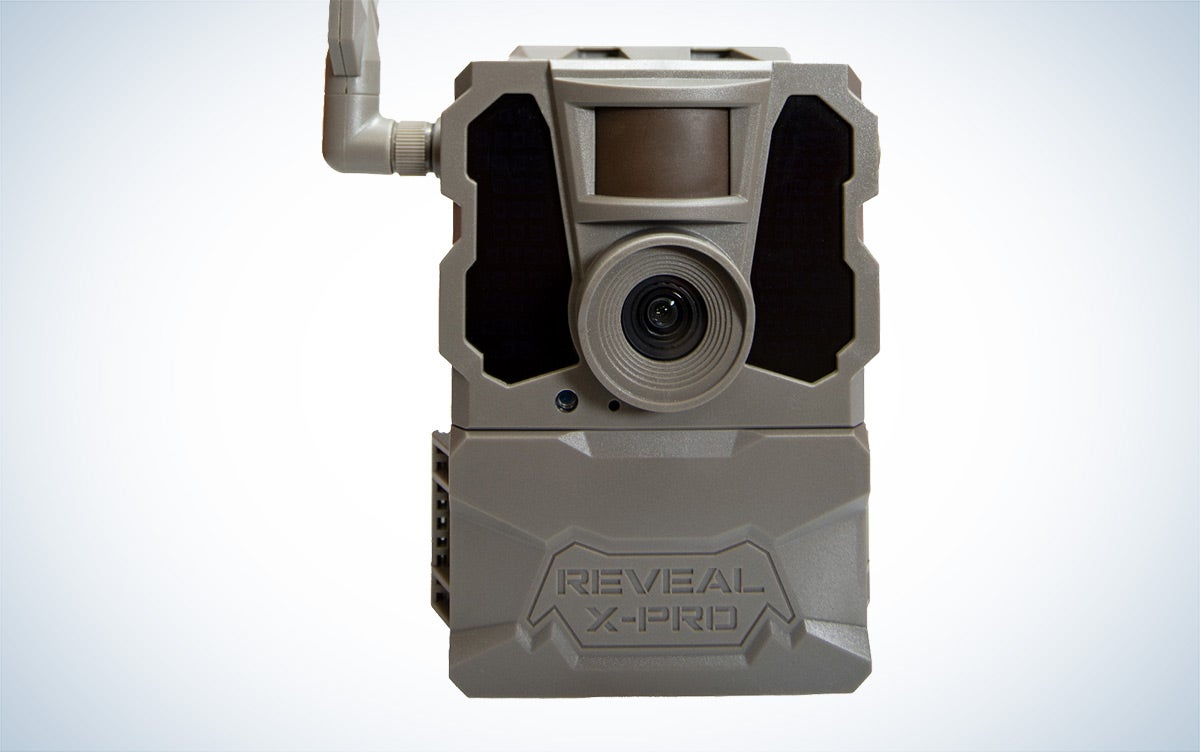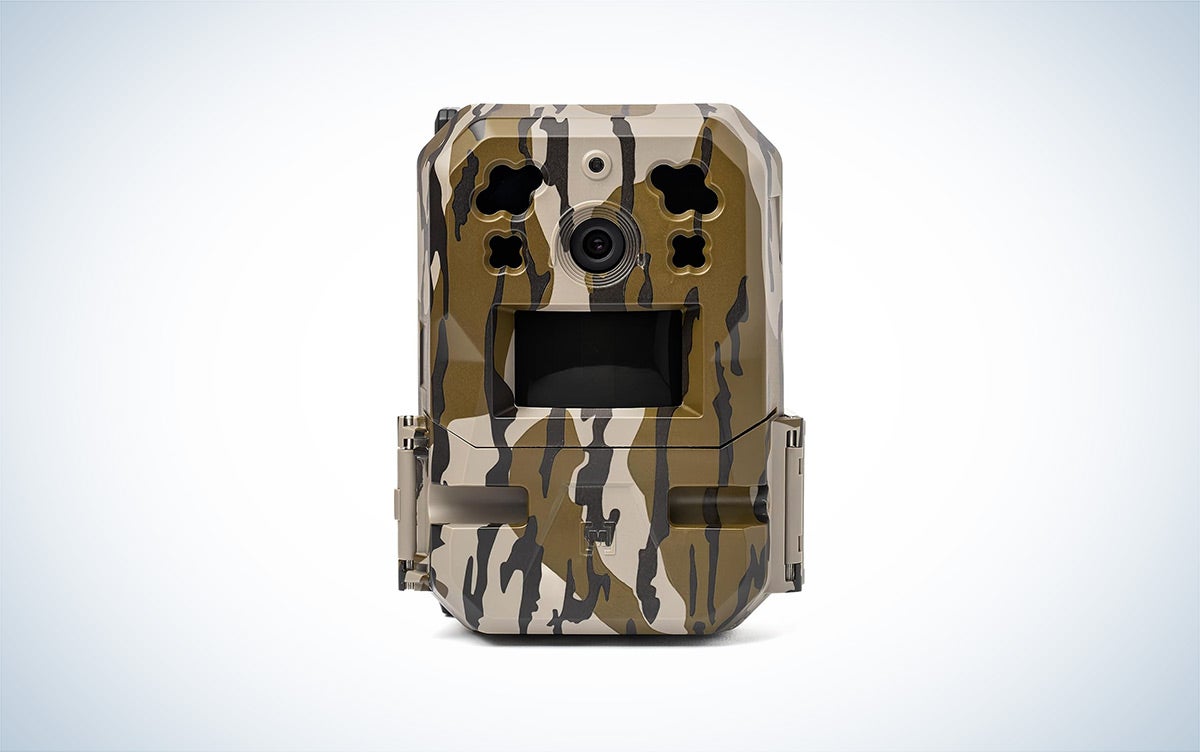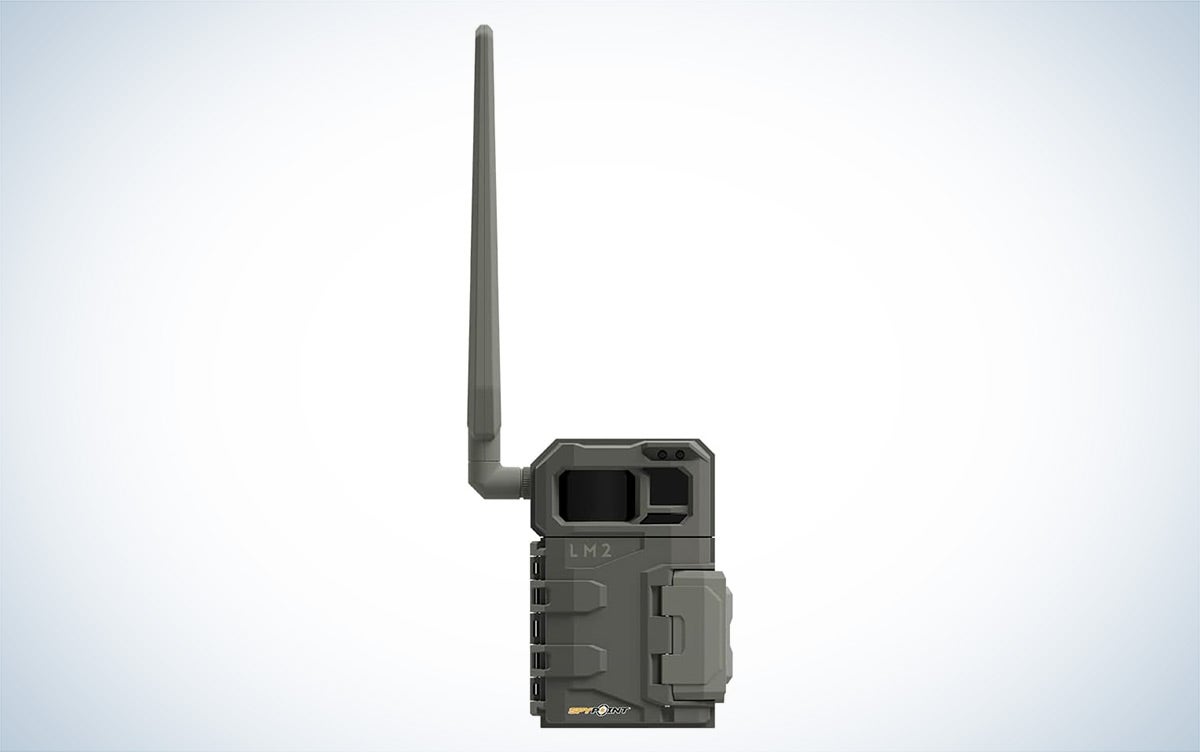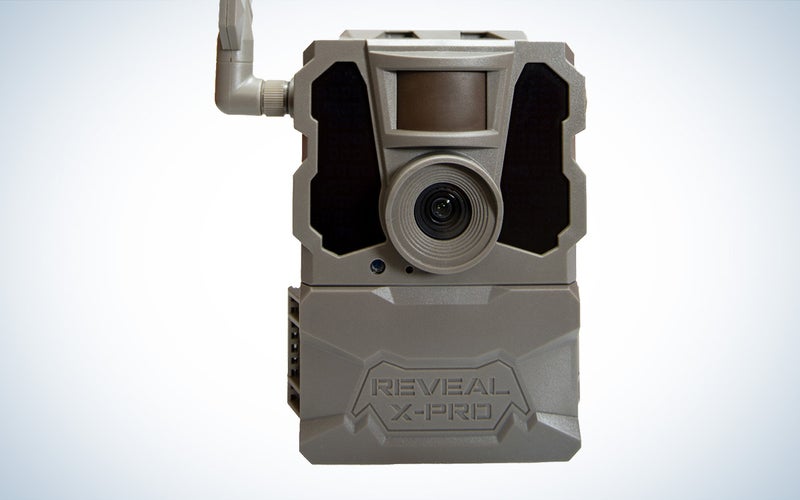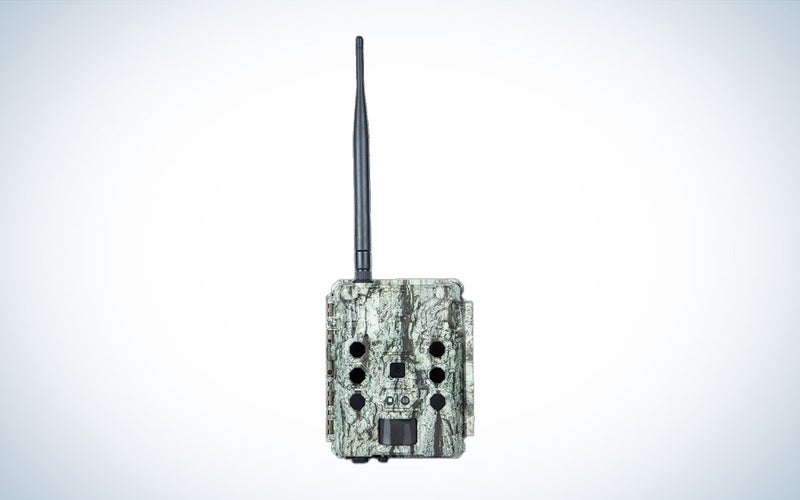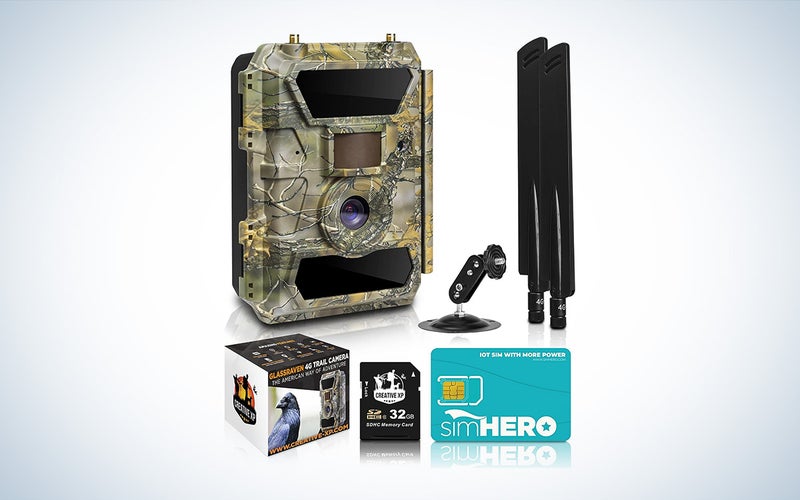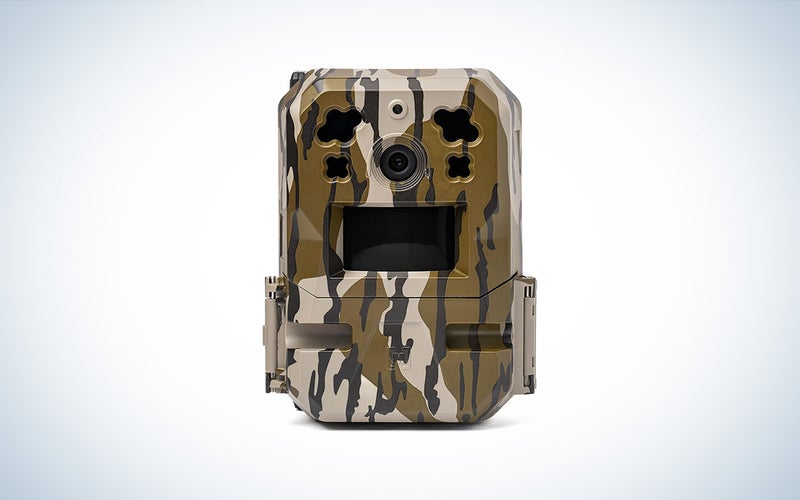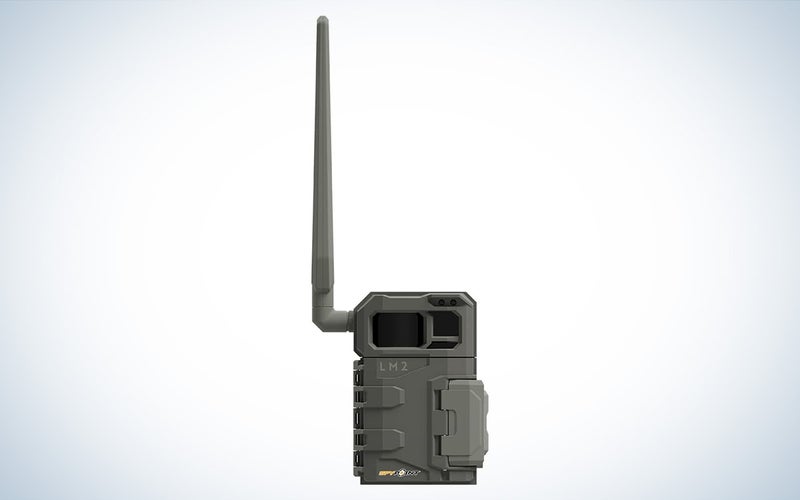We may earn revenue from the products available on this page and participate in affiliate programs. Learn more ›
If you take an interest in the goings on in natural areas, there’s no better way to snoop on Mother Nature’s micro dramas than with a cellular trail camera. These devices give you a set of ever-watching eyes in the wilderness, ready to snap a photo at the first sign of movement and text it directly to your phone. With a cellular trail camera, you won’t need to trek out to that stand of Aspen to get word that the mule deer have come to call. Instead, cellular trail cameras use motion sensing technology coupled with cell service to keep you connected even when sitting on your couch. Whether you’re monitoring the movements of a family of Night Heron, prepping for a deer hunt, or simply looking for an all-weather security camera, the best cellular trail cameras make for versatile tools that help you monitor the peripherals of your outdoor domain.
- Best overall: Tactacam Reveal X-Pro
- Best picture quality: Bushnell Cellucore 30
- Best for wet conditions: CREATIVE XP Cellular Trail Camera
- Best app: Moultrie Mobile Edge PRO Cellular
- Best budget: SpyPoint LM2
How we chose the best cellular trail cameras
To pick the best trail cameras, we examined a wide array of cameras from multiple makers. We looked for cameras that feature good motion detection and response time, crisp and detailed image quality, strong weather resistance, and easy-to-set-up cell service. Special features like GPS location data, and solid apps that actually helped ease of use were prioritized where we found them.
The best cellular trail cameras: Reviews and recommendations
Whether you are looking for a cellular trail camera to keep an eye on your property, plan for a hunt, or simply to enjoy the animals in your area, these cameras will provide quality results from afar.
Best overall: Tactacam Reveal X-Pro
Tactacam
Specs
- Max photo resolution: 16 megapixels
- Max video resolution: 1080p
- Detection range: 96+ Feet
- Wireless carrier: AT&T, Verizon
- Dimensions: 9 x 5 x 3 inches
Pros
- Built-in GPS
- Durable IP66 waterproof rating
- LCD screen makes it easier to set up
- Three tiers of data plans
Cons
- Pricey for the unlimited photo data plan
- Lots of potential extra fees
As a bit of a classic in the hunting and trail cam community, the Tactacam Reveal X-Pro is a natural choice to sit at the helm of any cellular trail camera best-of list. This HD trail camera delivers photos between eight and 16 megapixels with under half a second trigger times. The daytime detection range is roughly 96 feet, while the flash range at night is around 80 feet. And it can take videos up to 1080p.
Photos and videos from the Reveal X-Pro are delivered over AT&T or Verizon LTE. Swapping networks is as simple as switching out SIM cards. Tactacam offers three levels of plans with additional add-ons. The basic LTE plan costs a below-average price yet will only deliver 250 low-definition photos a month. For unlimited photos, you’ll have to either order them through the app for a charge or upgrade to the top-tier plan, which costs more than twice as much. Also, HD photos and videos come at an additional fee, which can add up.
The Tactacam Reveal X-Pro is also compatible with an external solar panel, though you’ll have to buy that separately. We think the benefit of not having to worry about coming back to replace batteries makes the solar panel worth it. The camera is IP66 rated, so you don’t have to worry if it rains. And a small LCD screen makes it easy to ensure that your setup actually captures what you want before you head home. All in all, Tactacam is one of the best cellular trail cameras. Its efficiency and quality make the slightly above-average monthly subscription cost worth it.
Best picture quality: Bushnell Cellucore 30
Bushnell
Specs
- Max photo resolution: 30 megapixels
- Max video resolution: 1080p HD
- Detection range: 100 feet
- Wireless carrier: Verizon, AT&T
- Dimensions: 8.9 x 5.59 x 3.15 inches
Pros
- Fast 0.2-second trigger speed
- 30-megapixel photo resolution and 1080p video
- Built-in three-inch display
- Easy setup and app control
Cons
- Expensive
If image quality is your main priority, the Bushnell Cellucore 30 is the way to go. It is capable of clear, well-saturated 30-megapixel photos. It’s also able to record HD videos with audio. The Hybrid mode takes a full-resolution photo followed by a video each time the camera is triggered. Plus, the speedy 0.2-second trigger speed means that you won’t miss an animal, even if it is moving through the field of view quickly.
This Bushnell cellular trail camera is ruggedly built and able to withstand the elements. The three-inch display on the camera makes getting it into position easy, and it’s protected by the cover. It utilizes an infrared flash with six LEDs for a 100-foot range at night. The camera runs on 12 AA batteries and uses SD cards up to 32GB.
You’ll get 30 days of free service, and then you can choose between AT&T or Verizon for a contract-free plan. There are two plan options: One with up to 2,000 monthly photo thumbnails, 10 monthly high-res images, and five monthly video downloads. Or, for $5 more, you can opt for an unlimited plan.
Best for wet conditions: CREATIVE XP Cellular Trail Camera
Creative XP
Specs
- Max photo resolution: 12 megapixels
- Max video resolution: 1080p
- Detection range: 65 feet
- Wireless carrier: AT&T, T-Mobile
- Dimensions: 5.83 x 4.61 x 3.07 inches
Pros
- Easy to use cell hook-up
- Durable IP66 rating
- Fast 0.35s trigger speed
- Compatible with solar panels and bear cage
Cons
- Blurry photos at night
- Can take a few minutes for photos to arrive on your phone
Creative XP offers an impressively reliable trail camera. When you’re buying outdoor gear, a rugged build is usually front and foremost in your priorities. The Creative XP camera offers IP66 waterproofing that protects it from rain, snow, and dust. It also distinguishes itself with a wider-than-average operating temperature between -13 degrees and 140 degrees Fahrenheit. That means that this camera should be ready for most climates within the continental US.
As an actual camera, the Creative XP does a good job at day photography. Its camera is responsive and decently detailed, producing 12-megapixel photos and 1080p videos. Unfortunately, it falls behind some in regard to crisp nighttime photography, often yielding somewhat blurry shots at night. If night photography is a priority for you, look elsewhere. Otherwise, the Creative XP is an excellent trail camera able to withstand even the harshest environments.
Best app: Moultrie Mobile Edge PRO Cellular
Moultrie Mobile
Specs
- Max photo resolution: 36 megapixels
- Max video resolution: 1080p
- Detection range: 100 feet
- Wireless Carrier: Verizon & AT&T
- Dimensions: 10.12 x 6.06 x 3.74 inches
Pros
- Automatically detects specific animals
- App provides lots of information with AI features
- Flexible subscription plan options
- On-board memory (no SD card required)
Cons
- Requires a subscription to take full advantage of features
The Moultrie Mobile Edge Pro Cellular sports a 36-megapixel camera with a lengthy 100-foot range. Moultrie’s app is free to download and offers a plethora of handy features, such as smart identification that can differentiate a buck from a deer. It also features False Trigger Elimination, which uses AI to identify species that you’re specifically targeting and only save photos of those species. It can even provide analytics on animal movements and detailed info on what’s happening in your neck of the woods. And you’ll get weather reports to better plan out your hunts.
Though the app is free, you will need to subscribe to a cellular plan through Moultrie to take advantage of some of the app and cameras’ capabilities. You can use the cameras without a plan but will then need to physically retrieve the photos instead of accessing them remotely from your phone. And while some may not love the idea of a recurring fee, Moultrie makes it very flexible. It offers three plan options and the ability to pay monthly or annually. In addition, there are no activation or cancelation fees, which means you can pay for the months during deer season and then cancel until next year.
Once you pay for the plan, you won’t be surprised by any extra premium features in the app. You get it all at no additional cost. And, unlike other cellular trail camera companies, Moultrie never deletes your files. They will always be there, even if you cancel your plan. If you are looking for a fleet of trail cameras that work together like a spy net, then Moultrie delivers a powerful product.
Best budget: SpyPoint LM2
SpyPoint
Specs
- Max photo resolution: 20 megapixels
- Max video resolution: N/A
- Detection range: 90 feet
- Wireless carrier: Verizon, Nationwide
- Dimensions: 3.5 x 5 x 8 inches
Pros
- Free app option for up to 100 photos a month
- Paid subscription services cheaper than some of the competition
- 90-foot detection range with multi-shot mode
- Compact design
Cons
- Requires multiple subscriptions for multiple cameras
- No video capabilities
This compact, affordable trail camera complements its solid hardware with a robust mobile app. You can typically find a two-pack SpyPoint LM2 for cheaper than most other cellular trail cameras. Instead of a high up-front cost, this camera packs its frills into the included app. The 20-megapixel camera with a half-second trigger time doesn’t capitalize on high definition and speed the way some pricer cameras do, but with a 90-foot range, it delivers good enough images for the purpose.
Using LTE, the camera sends photos directly to you via the SpyPoint app. The service is far more affordable than some, offering a free plan with 100 photos and priced plans from 250 photos to unlimited. A secondary subscription service can reduce the price of running multiple cameras simultaneously. The app comes with some extras built in, such as species recognition, mapping, and weather. The camera also stamps photos with some app-included info, such as temperature and moon phase.
SpyPoint delivers a solid camera with the LM2. The line is further benefited by the available accessories, such as the SpyPoint SB-300S security case. It is also compatible with SpyPoint’s solar panel for those who want to keep well aware of their hunting tract.
What to consider when shopping for the best cellular trail cameras
Picture quality
For most, picture quality is one of the most important factors when selecting a cellular trail camera. Your trail cam images won’t do much if you can’t clearly see the animal in the photo. However, the highest megapixel count doesn’t always translate to the best camera. A higher megapixel count will certainly help, but you’ll also want to check for image samples to see how clear they actually are.
Night vision capabilities are another important aspect of trail camera quality, as subjects often arrive at night. Thus, you’ll want a camera with good infrared systems that emit and absorb radiation that’s not visible to the naked eye.
Battery life
A cellular trail camera’s battery life can be a make-or-break factor for a trail camera, especially for those looking to install a trail camera in a remote location. You’ll want a camera that can hold a charge for months. Or, look for a camera that is compatible with solar panels to omit the need for subbing out batteries altogether.
Cellular connection
Connection quality and availability among trail cameras vary, but all will require a subscription of some sort. Solid cellular plans ensure that a camera will be able to transmit photos of whatever wildlife comes its way. Some cameras offer dual SIM functionality and automatically pull from the strongest signal. Others will require you to choose a specific carrier, so you’ll want to take a look at coverage maps to ensure the location of your trail camera falls within the coverage range.
It’s also important to consider the price of the data plan in the camera’s overall cost. You may be able to find a cheap trail camera, but some plans can cost well over a hundred dollars a year. Additionally, some plans may have lots of additional fees associated with them, such as an extra charge when you want high-resolution photos or videos. Be sure to read the fine print to know what you are getting into before hitting that buy button.
Build quality
Your trail camera is going to be outside, so a rugged build is another all-important factor. While all offer a certain level of protection against the elements, some cellular trail cameras are better. Be sure to check if the manufacturer provides any specific information on weatherproofing to ensure your camera will last. Knowing how and where to set up your trail camera can also help prolong the life of the device.
Special features
Additional features like GPS location, weather, and moon phase will appeal to some users, especially those who are using their cellular trail camera to plan for hunts. Some other cameras further make use of daisy chain connections to deliver photos from multiple cameras over one transmitter.
FAQs
Q: Which is the best cellular trail camera?
We think that the Tactacam Reveal X-Pro is the best cellular trail camera for most users. Easy to use and versatile with 24 to 8-megapixel photos and half-a-second trigger times, it’s ready for almost any situation you bring it to.
Q: What is the difference between wireless and cellular trail cams?
Wi-Fi and cellular trail cameras work similarly, but they’re not to be confused. Wi-Fi cameras require a steady Wi-Fi connection, as they use this connection to send you updates. Cellular trail cameras, on the other hand, use a data plan via a cellular carrier such as Verizon or AT&T.
Q: How much does a cellular trail camera cost?
Cellular trail cameras cost anywhere from about fifty dollars to a few hundred dollars. However, for full functionality, most will require a subscription, which increases the cost over time.
Q: Do cellular trail cams require a subscription?
Yes, cellular trail cameras require a subscription. Like a smartphone, these cameras text photos over a cellular data plan. However, subscriptions vary considerably in price and value.
Q: Are cellular trail cameras worth it?
Cellular trail cameras can make all the difference when you’re monitoring a hard-to-reach environment. Many animals will avoid places that smell strongly of humans. Cellular trail cameras make it possible for you to monitor a place without going there for weeks at a time. This makes your life easier while making the animals that call that place home dramatically more comfortable.
Whether you’re a hunter, a conservationist, or someone who simply needs eyes in the woods that are ready to alert you when something passes at any time, cellular trail cameras can deliver great value. Moreover, cellular connections mean you can use these cameras anywhere that cell service reaches.
Final thoughts on the best cellular trail cameras
- Best overall: Tactacam Reveal X-Pro
- Best picture quality: Bushnell Cellucore 30
- Best for wet conditions: CREATIVE XP Cellular Trail Camera
- Best app: Moultrie Mobile Edge PRO Cellular
- Best budget: SpyPoint LM2
With rugged builds ready for myriad biomes, quick-triggering night vision, and cellular connections that keep you at home and animals comfy, cellular trail cameras are great investments for hunters, conservationists, and rural landowners. The best cellular trail cameras offer good cellular connections, high-quality photos and videos, and useful apps. If you need a pair of ever-watching eyes to monitor a tract of woods near you, you’ll find a friend in a stealthy cellular trail camera.
Why trust us
PopPhoto has a long history of delivering the opinions of some of the sharpest and most prolific camera dorks the world has to offer. Since 1937, we’ve been reviewing cameras, providing wisdom from well-known photographers, and generally just nerding out about all that goes into making great pictures. Our current crop of writers and editors have decades of professional photography and camera writing experience among them. Collectively, we’ve probably shot with just about every camera and lens combo you can imagine—as well as some obscure stuff you may not even know about. Remember the Casio Tryx folding camera? PopPhoto does.
We also get that buying a camera is a big decision, which is why we’re dedicated to helping folks choose the right one (or, in our case “ones”) for their needs. Case in point: Handing over top dollar for an expensive rig may leave you unsatisfied if it doesn’t fit your preferred shooting style. Sure, a $6,000 sports-oriented DSLR can capture landscapes, but do you really need to do it at 30 frames-per-second? No, you don’t.
